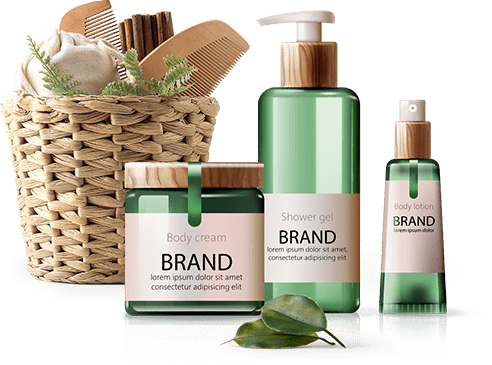Learn about the quality inspection of skincare products from R&D, production to market launch in just three minutes!
Skincare products are an integral part of modern life, and the R&D, production, and quality inspection processes behind them are crucial to ensuring the safety and reliability of each product. This article will walk you through the entire cosmetics manufacturing process in just three minutes, giving you a deeper understanding of this sophisticated industry.
1. Research and Development Stage: Skincare product R&D is a phase that converges technology, aesthetics, and market demand. Researchers must not only pursue product innovation and effectiveness, but also consider cost, raw material availability, and regulatory compliance. During this phase, skincare companies invest significant resources in experiments and testing to ensure that each product meets market demand. 2. Production Process: Once the R&D stage is complete, the product enters the production process. This includes raw material sourcing, blending, processing, and final packaging. Quality control is crucial throughout the production process. Production facilities must strictly adhere to ISO22716 and GMP-standardized operating procedures to ensure high quality standards at every step. Furthermore, multiple inspection procedures are performed on the production line to ensure product consistency and quality. >3. Quality Inspection:
Quality inspection is the final step in ensuring product compliance. This includes visual inspection, ingredient testing, stability testing, and other aspects. Modern technology has made the testing process more precise and efficient. Microbiological testing and stability testing ensure that the product remains safe and stable even after long-term use.
Step 1: Raw material inspection
During this phase, we focus on inspecting incoming raw materials to ensure their properties, appearance, color, flavor, and physical characteristics meet standards. This includes pH testing to confirm changes in raw material quality and safety, as well as refractive index testing for qualitative and quantitative analysis of the refractive index and concentration of substances.
Step 2: Water quality inspection
This stage ensures that the water used in the process meets health and safety standards. Residual chlorine testing monitors water quality to ensure it meets factory production water standards. Conductivity testing checks for ions or conductive substances in the water.
Step 3 Environmental Monitoring
為To prevent production contamination, we conduct strict environmental monitoring. Colony monitoring tests the bacterial count of specific pathogens at various times and locations to ensure that good hygiene standards are maintained during the production process.
Step 4: Semi-finished Product Inspection
Semi-finished product inspection ensures product eligibility and compliance with requirements. Microbiological testing eliminates microorganisms that should not be present in the product, and high-pressure sterilization is performed to effectively eliminate bacteria, viruses, fungi, and spores to ensure thorough sterilization during the inspection process. At the same time, viscosity testing is performed to ensure the fluidity and viscosity of the finished product, and data is recorded to ensure that the product meets standards.
Step 5: Finished Product Inspection
Final product inspection is the final step in confirming that product quality specifications meet specified requirements. This inspection includes multiple aspects, including appearance, fit, labeling, weight, as well as testing of the pH, viscosity, centrifugation, stability, and microbiological characteristics of the ingredients, to confirm product compliance. A Cosmetic Product Safety Data Sheet (MSDS) and a Cosmetic Product Safety Data Sheet (CoA) are generated to provide customers with greater assurance of quality and safety, facilitating smooth international sales.
4.Cosmetic Product Registration and Product Information File (PIF)
To align with international trends, Taiwan officially implemented the Cosmetic Hygiene and Safety Management Act in 2019.
The new law eliminates inspection and registration and introduces the concepts of Cosmetic Product Registration and the establishment of a PIF. It encourages cosmetics distributors to exercise self-management while shifting responsibility to brands and manufacturers, with government oversight. Product registration information includes: product name, product type and use, dosage form, precautions for use, manufacturer or importer information, manufacturing location information, full ingredient names and content, etc. Registering cosmetics in government systems allows the public to verify product information and legality, protecting consumer safety and rights.
PIF provides safe and effective quality assurance for consumers and businesses. Taiwan is now following the EU's lead in implementing the PIF system. Pursuant to Article 11 of EU Cosmetics Regulation 1223/2009,
The PIF system primarily includes:
☑ Cosmetic Safety Report (cosmetic safety information and safety assessment)
☑ Experimental evidence of cosmetic effectiveness
☑ No animal testing
☑ Good Manufacturing Practice Certification (cosmetic manufacturing plants must comply with GMP or ISO 22716 certification)
☑ Strict cosmetic labeling regulations (complete product registration documentation)
Quality Assurance for Consumers: For consumers, the implementation of the PIF system means a higher level of quality assurance. They can use products with confidence, knowing they have undergone rigorous safety assessments, are backed by scientific testing, and adhere to the highest quality standards during the manufacturing process.
Self-Regulation for Industry: For industry players, the PIF system is an effective way to enhance brand reputation and mitigate legal risks. Through rigorous documentation, companies can demonstrate their commitment to quality, enhance customer trust, and avoid potential legal issues.
Overall, the PIF system and cosmetics registration are not only regulatory requirements but also a form of sound oversight for the entire industry ecosystem, promoting the healthy development of the cosmetics market while ensuring the rights and safety of consumers.
This three-minute video on the quality control inspection process provides a quick understanding of the quality inspection process for skincare products, from research and development to production and market launch, and its importance. This process involves a wealth of expertise and technological application to ensure that every bottle of skincare product is presented safely and effectively to consumers. In this challenging and innovative industry, quality is an essential core value and the cornerstone of a brand's sustainable development.
- 3 essential key points for OEM/ODM skincare products! OEM skincare factory products and experience are crucial
- Analysis of the Causes of Hair Loss and Hair Care Trends During Seasonal Changes: How Should Brands Develop Anti-hair Loss Products?
- What is the PIF, the must-have for cosmetics? Are you ready?
- About Maywan, the persistence in producing safe products
- Say no to oily skin! Understand the root cause of oiliness and restore moisturized skin
- Is silicone-free the only option? Understanding silicone and debunking the biggest controversy in beauty products
- Anti-hair Loss Product Formula Analysis: Three Popular Non-medicinal Hair Care Ingredients Recommended
- Hair care is ineffective? What are some NG steps that will make your hair care efforts useless?



